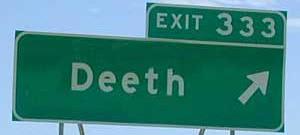Most of Iowa's politicos are looking forward, so to speak, to Terry Branstad's running mate choice and a fall - or a summer and fall - full of negative ads. But it's worth one last look back at the June 8 primary to see how crossover voting impacted the outcome. The answer, from one county at least, is that the changes were noticable but not decisive.
Johnson County is well known as the most Democratic in the state, and primaries here are traditionally dominated by courthouse contests. But with all the countywide Democratic incumbents running unopposed, most Democratic voters saw a ballot with no contested races except the US Senate race, where Roxanne Conlin's landslide (77% statewide) was pretty much anticipated in advance.
So some Democrats were tempted by the hot Republican primary. Iowans, of course, can change party at any time. Since the primary there's been a spirited discussion on the Coralville Courier site about the impact of crossover voting on the 2nd CD race, with some Steve Rathje supporters contending that Democrats crossed over to support primary winner Mariannette Miller-Meeks in the hopes that she'd be a weaker opponent for Democratic incumbent Dave Loebsack.
Here's what the actual Johnson County crossover numbers indicate:
Democrat, stayed Democrat: 3900The no party crossovers (71% of which crossed to R rather than D) were a bigger factor than crossover Democrats. And even if for the sake of argument you subtract 477 votes from MMM's Johnson County total and the total GOP vote, on the highly unlikely assumption that EVERY crossover Dem voted for her, that still leaves her with 49.6% of the vote, about 7% less than she really got. Apply that across the district - I'm really polling numbers out of an orifice here - and she's at 43% or so, well above the 35% convention threshold.
Democrat, change to Republican: 477
Republican, change to Democrat: 27
Republican, stayed Republican: 3838
Green, change to Democrat: 3
Green, change to Republican (huh?): 1
Libertarian, change to Democrat: 0
Libertarian, change to Republican: 1
No Party, change to Democrat: 212
No Party, change to Republican: 526
Also note that 247 more votes - about 5% of the total Republican primary vote - were cast for governor that for Congress in the Republican primary. My guess is those 247 blanks were disproportionately from the crossover voters.
That's just one county, of course, but the second biggest in the district. I'm not as comfortable extrapolating that across the whole state for the governor's race, or even sure which way to slice it. Pre-primary polls showed Branstad beating Culver handily while Vander Plaats and Culver were neck and neck. Crossover Dems may have voted for BVP as the perceived weaker opponent, or for Branstad as the more acceptable Republican.
In general, across years and across parties, I think most folks who cross over are motivated more to vote FOR someone as the best candidate (or against someone they loathe) rather than to draw a weak opponent for their own party's candidate in the fall. Anyone who's willing to vote that strategically is also likely to care about a low-profile Commissioner of Canines contest - or a predictable yet significant US Senate primary.
In specific, I heard a lot more talk among Democrats about the governor's race (rated by most national observers as leaning to R takeover) than about the congressional race that's still considered Safe D. The undervote for Congress backs that up. I think the governor's race pulled in the independents and leaners (even a diehard Roxanne fan like me must admit that our primary was, Tom Fiegen's outbursts aside, pretty dull). Branstad did well around here, and any MMM gain was just a side effect. There's a loose correlation at the precinct level between MMM and Branstad, but that's to be expected since they both won with clear majorities in multi-candidate fields. Both did better in Iowa City and on absentees than they did in the outlying areas.
Could crossovers swing a close race? Sure. But this year we didn't have any, least not around here.
I don't like crossovers myself, both on principle and because enough of my local candidates have been hurt by it. I don't want Republicans choosing my supervisor candidates any more than they want me choosing their nominee for governor. That's what November is for.
But all movement in primary voting is in the other direction. Witness the most important result of June 8 - not a candidate race but California's Proposition 14. Assuming it stands up in court, it creates a blanket ballot with the top two candidates, no one else, and no write ins - maybe two Democrats, maybe two Republicans, definitely no third parties - facing off in November.

No comments:
Post a Comment